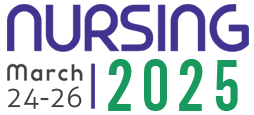Title: Motor and functional recovery post radical thyroidectomy: A comparative study of two types of physical exercises
Abstract:
Thyroidectomy is one of the standard surgical procedures worldwide. AlthoughThemortality and morbidity of thyroidectomy are low; some long-term complications continue to represent significant health and social problem. Early physical exercises for these patients are effective in enhancing the neck and shoulder motor function and improving quality of life.
Aim: Assess the efficacy of early exercise programs (self rang of motion and active range of motion exercises) on radical thyroidectomy patients' motor and functional abilities.
Setting: The researcher conducted the study at the Head and Neck Surgery Unit in Alexandria Main University Hospital, Egypt.
Design: the researchers used a comparative design.
Subjects: 50 radical thyroidectomy patients were included, and each patient was randomly selected to be allocated to one of the two groups, 25 patients each.
Tools: Four tools were used: Socio-demographic and clinical data structured interview schedule, "The disabilities of the arm, shoulder, and hand" outcome questionnaire, shoulder recovery outcome, and neck recovery outcome. The exercise programs were applied one week before the operation and continued for two months postoperative. The researchers developed verbal and written instruction and gave it preoperatively, and patients were re-assessed by utilizing tools II, III, and IV after applying the program to each group.
Results: 88% of self exercises patients held against maximal resistance of muscles strength after two months postoperatively compared to 48%of active exercises patients held against gravity elimination. Arm circumference measurements were no statistically significant differences between the two groups, neither preoperatively nor postoperatively. In contrast, range of motion of the shoulders, shoulder pain, Disabilities of Arm, Shoulder, and Hand score, ability to lift objects, ability to do work, and overall activity was significantly improved among self-exercise patients than in active exercise patients.
Determination& Recommendation: Significant improvement of the self exercises group concerning the shoulder, arm, and neck functional and motor activity. Modify the disabilities of the arm, shoulder, and hand score of self exercises patients. Statistically significant differences between self and active exercise group regarding neck Dissection Impairment Index after two months postoperative. Recommendations: Patients and their families must be involved in early rehabilitation to prevent complications and improve their daily living activities.


